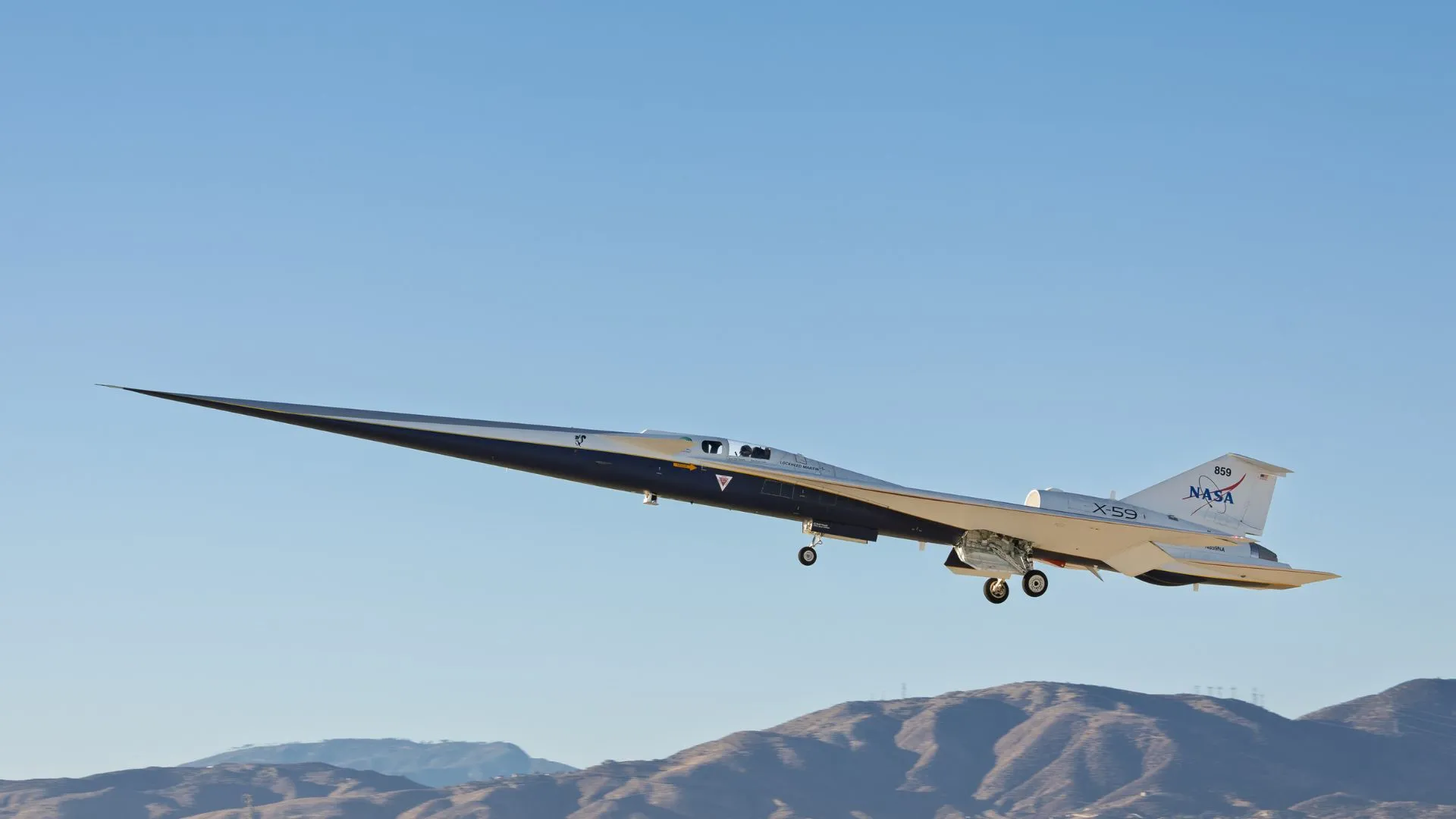Copyright Interesting Engineering

NASA’s experimental X-59 jet took to the skies over Southern California on Tuesday (October 28) morning in its first test flight. The successful mission marked a major step toward the return of supersonic commercial air travel, this time without the ear-splitting sonic booms. The sleek, needle-nosed aircraft lifted off shortly after sunrise from Lockheed Martin’s Skunk Works facility at Plant 42 in Palmdale, California. After climbing over the desert landscape, the aircraft banked north and completed a smooth landing at Edwards Air Force Base, near NASA’s Armstrong Flight Research Center, about an hour later. The flight was closely accompanied by a NASA chase plane to ensure safety and collect data. “X-59 successfully completed its first flight this morning,” said Lockheed Martin spokesperson Candis Roussel in a statement. She described the mission as a “significant aviation milestone.” Designed to muffle the boom The X-59, developed by Lockheed Martin in partnership with NASA, is a one-of-a-kind experimental aircraft designed to cut the explosive sonic boom of traditional supersonic jets down to a soft “sonic thump.” Its distinct shape, with an elongated nose and carefully balanced proportions, helps disperse shock waves before they merge into a loud boom. NASA and Lockheed say this innovation could remove one of the main barriers that has prevented supersonic passenger flights over land since the Concorde era—noise. The goal is to prove that supersonic travel can be fast, efficient, and quiet enough to fly over populated areas without disturbing communities below. “The X-59 is a testament to the innovation and expertise of our joint team, and we are proud to be at the forefront of quiet supersonic technology development,” noted OJ Sanchez, vice president and general manager of Lockheed Martin Skunk Works. From concept to sky Building and testing the X-59 has been a six-year journey. Since 2018, NASA has paid Lockheed Martin over $518 million to design and construct the aircraft. Measuring nearly 100 feet (30 meters) from nose to tail, the single-engine jet reached 230 mph (370 kph) during this initial subsonic flight and climbed to 12,000 feet (3,660 meters). NASA’s lead test pilot, Nils Larson, piloted the X-59 on its maiden flight, which was observed by about 200 aerospace workers and their families from a safe distance. Future test flights will gradually push the aircraft to higher altitudes and speeds, eventually surpassing Mach 1—the speed of sound, roughly 761 mph (1,225 kph) at sea level. At full capacity, the X-59 is expected to cruise at 925 mph (1,490 kph), or Mach 1.4, at an altitude of 55,000 feet (16,764 meters), more than twice the height and nearly twice the speed of today’s commercial jets. The future of supersonic travel NASA plans to use the data from the X-59’s test flights to help establish new sound standards for supersonic travel over land. If successful, these studies could pave the way for the next generation of quiet, fast, and sustainable passenger aircraft. “X-59 is a symbol of American ingenuity. The American spirit knows no bounds. It’s part of our DNA – the desire to go farther, faster, and even quieter than anyone has ever gone before,” stated Sean Duffy, Acting NASA Administrator and U.S. Transportation Secretary, in the press release. “This work sustains America’s place as the leader in aviation and has the potential to change the way the public flies.”



